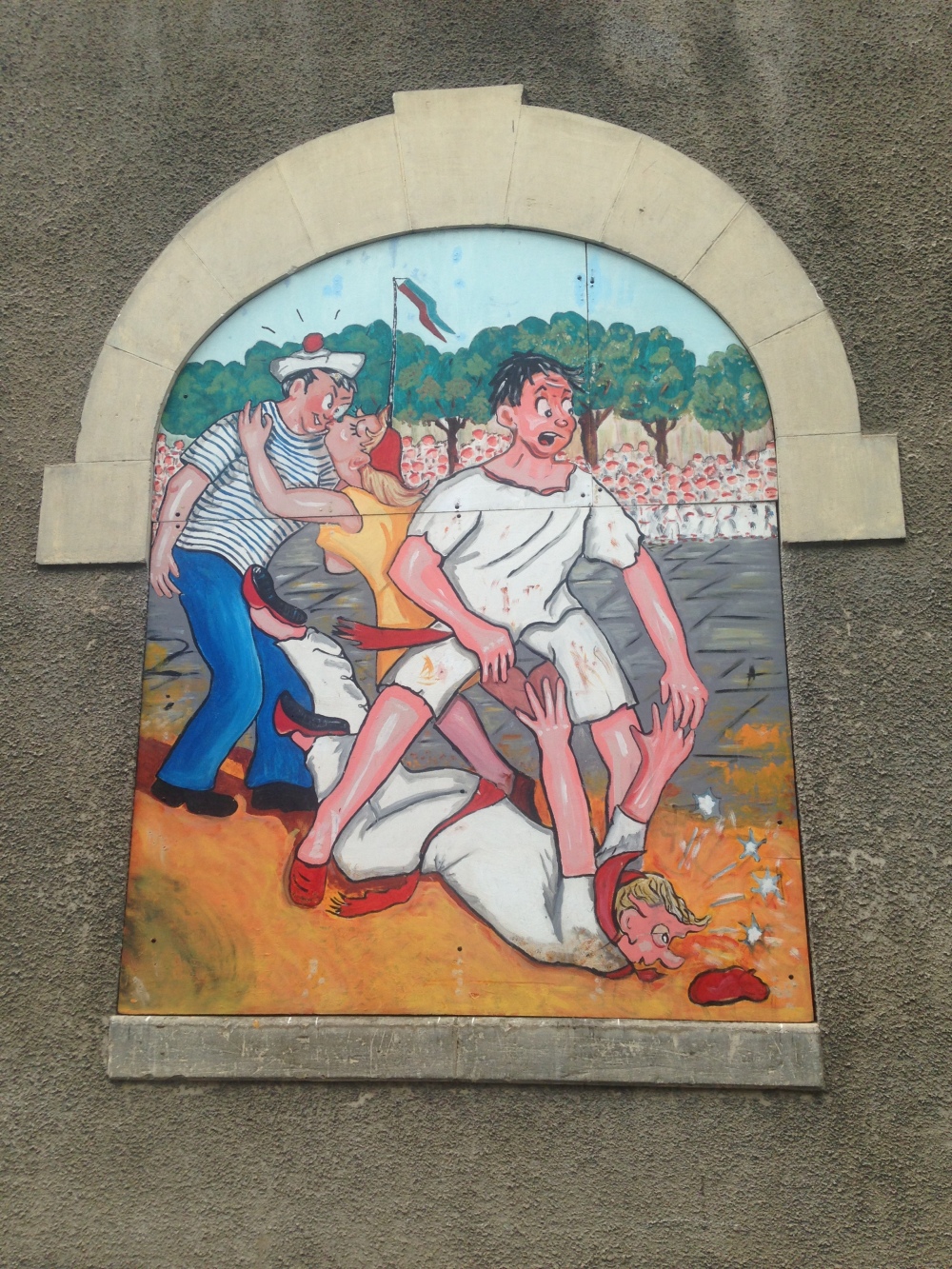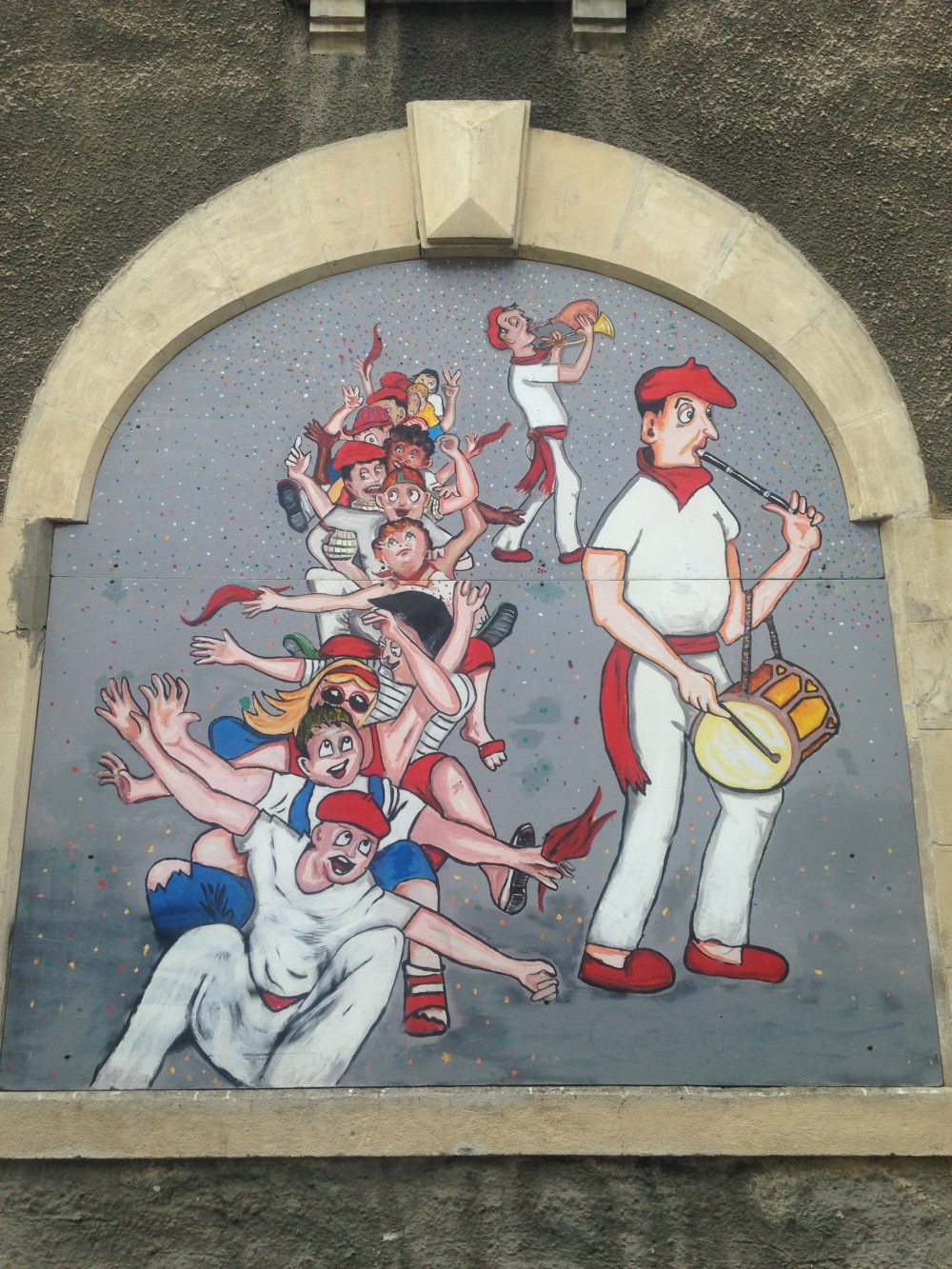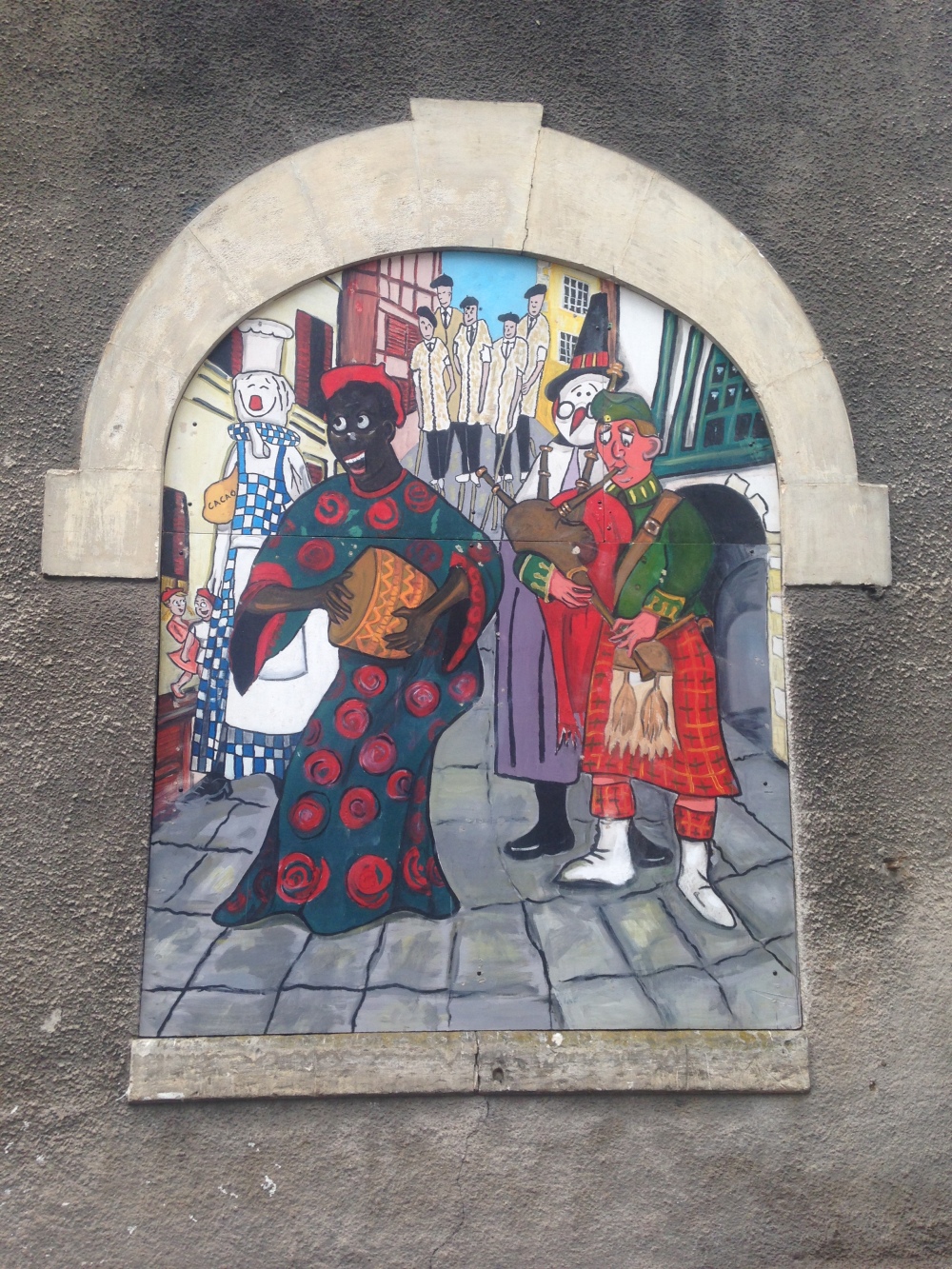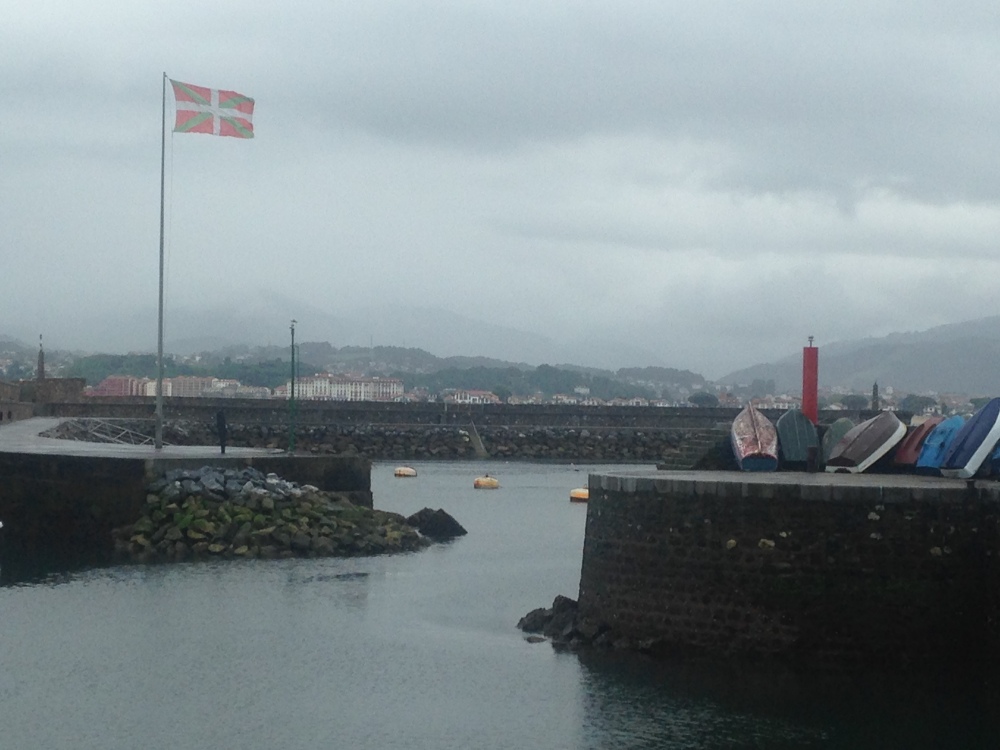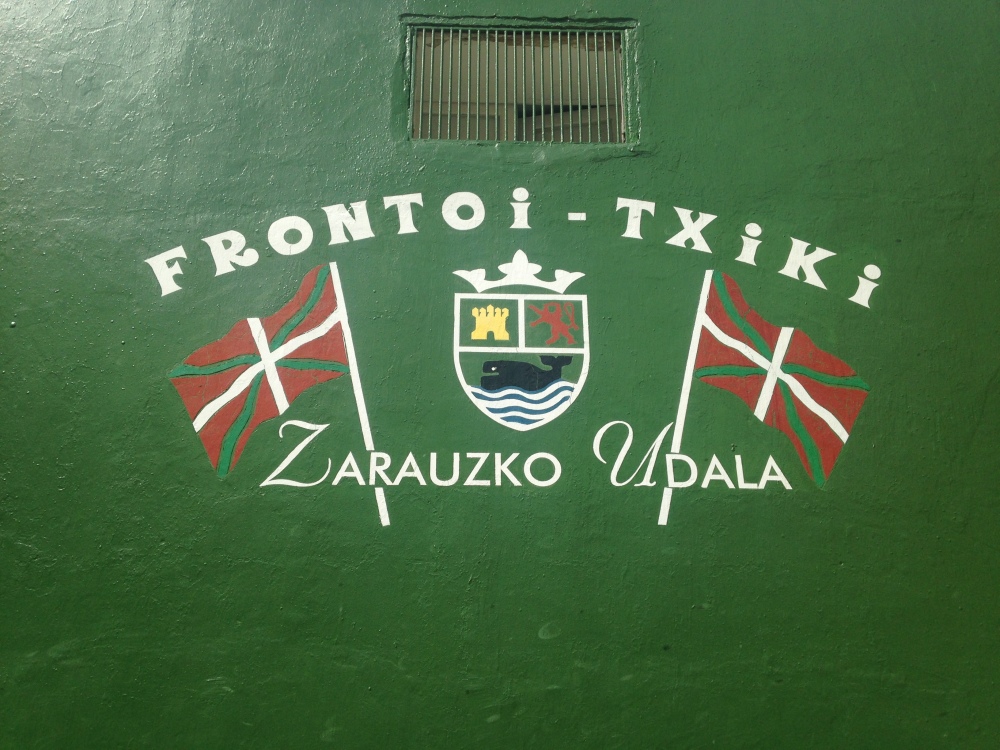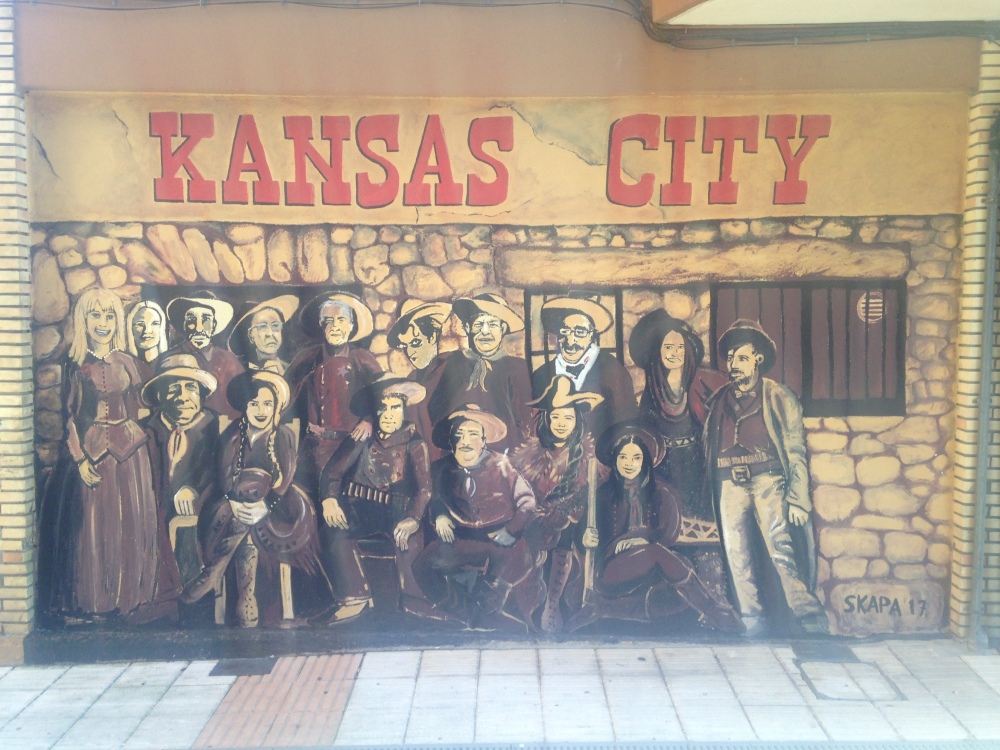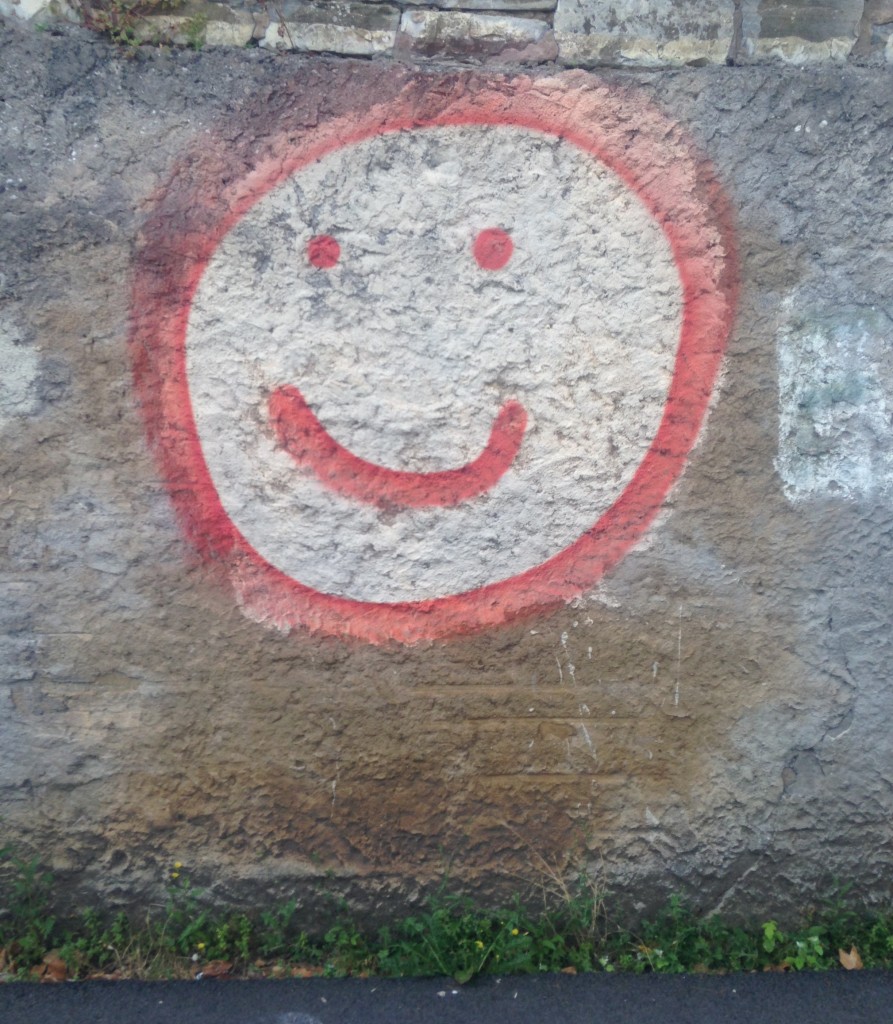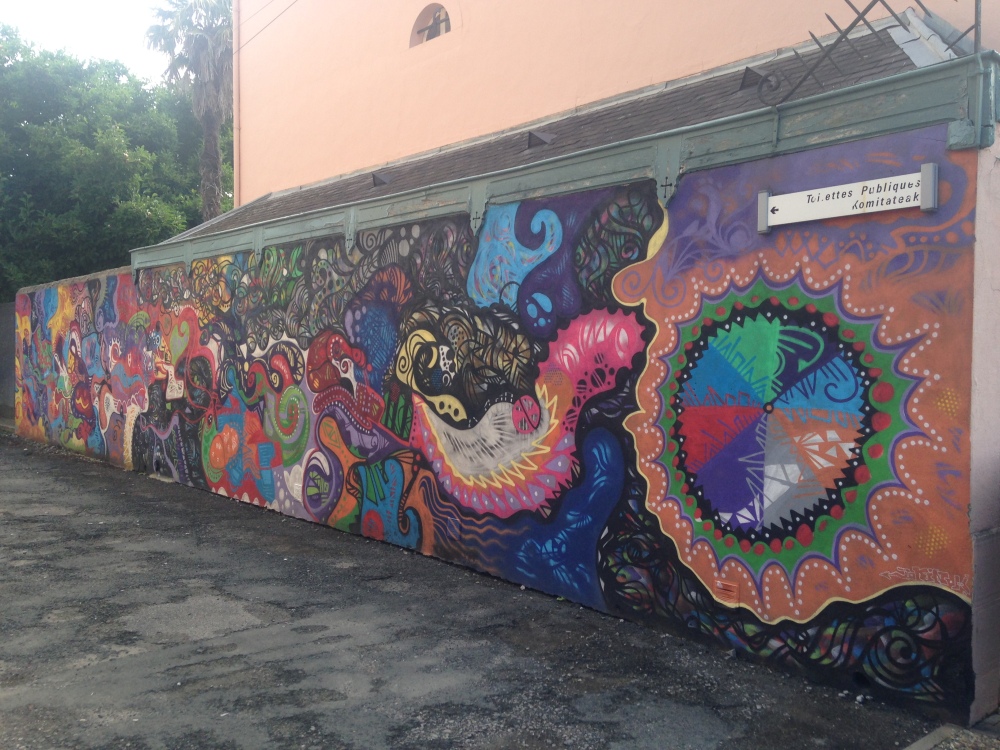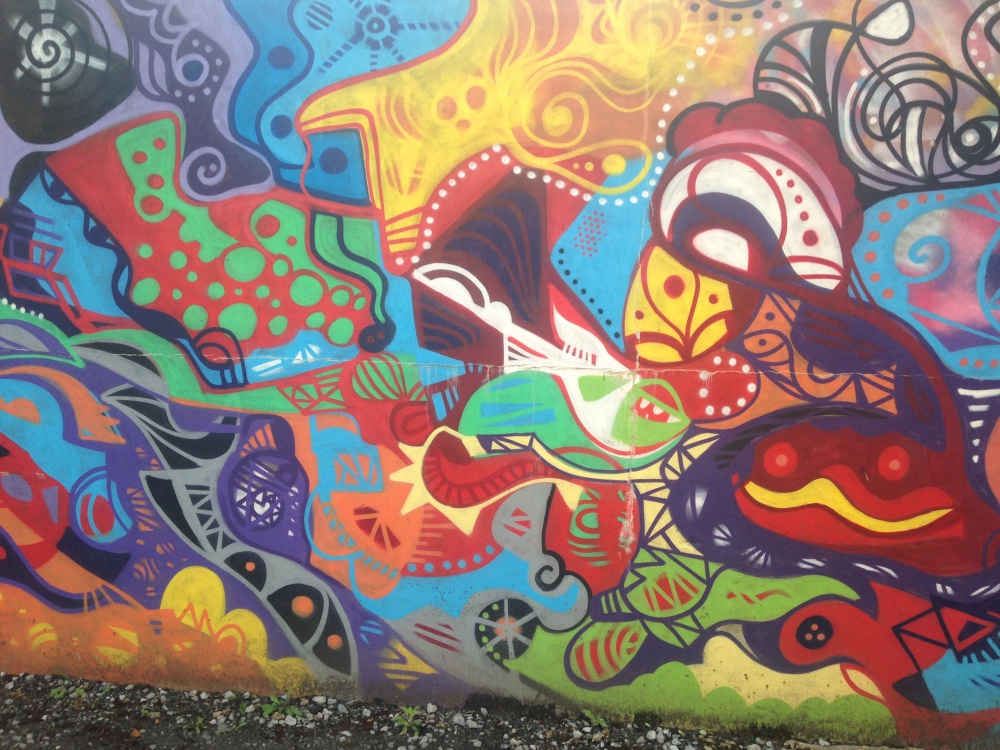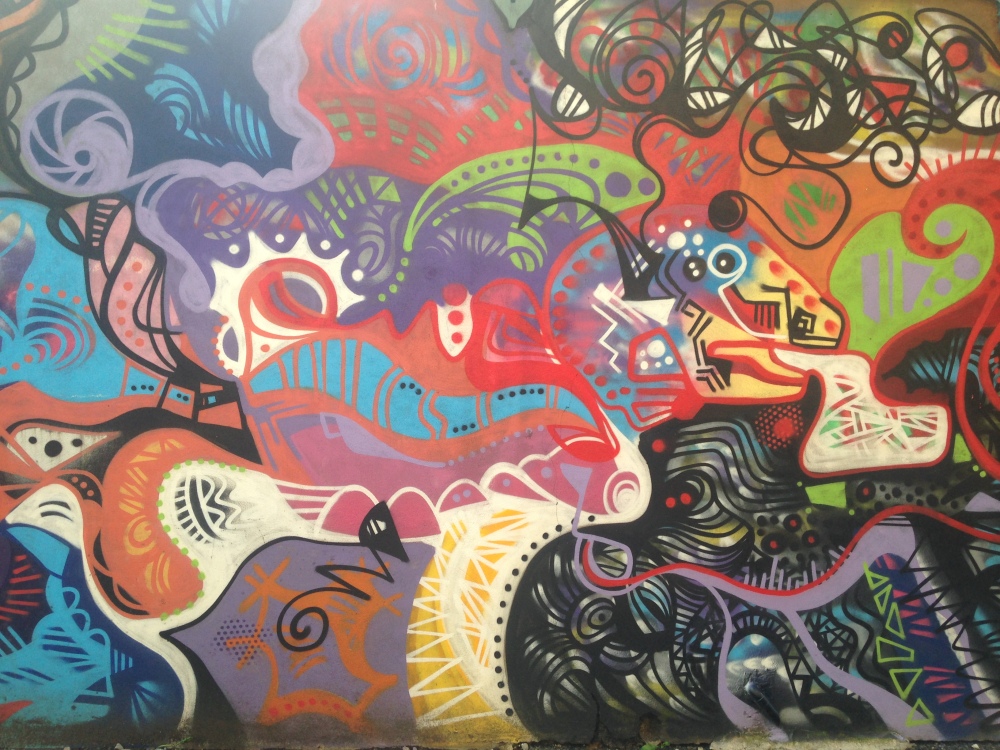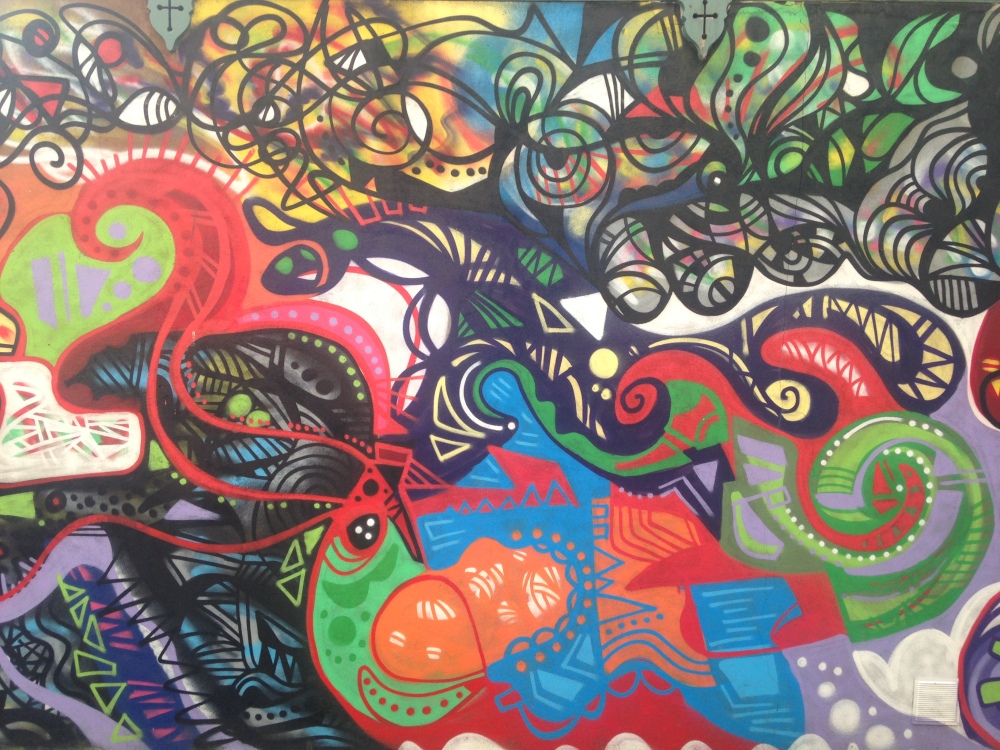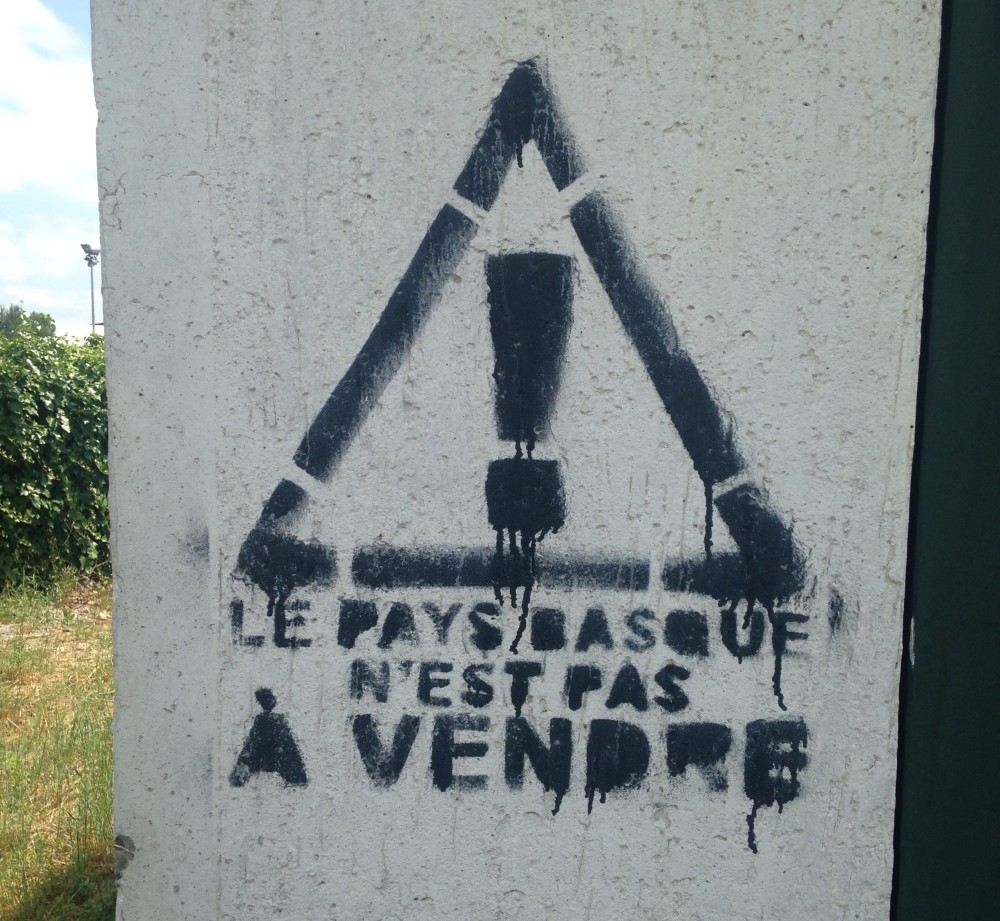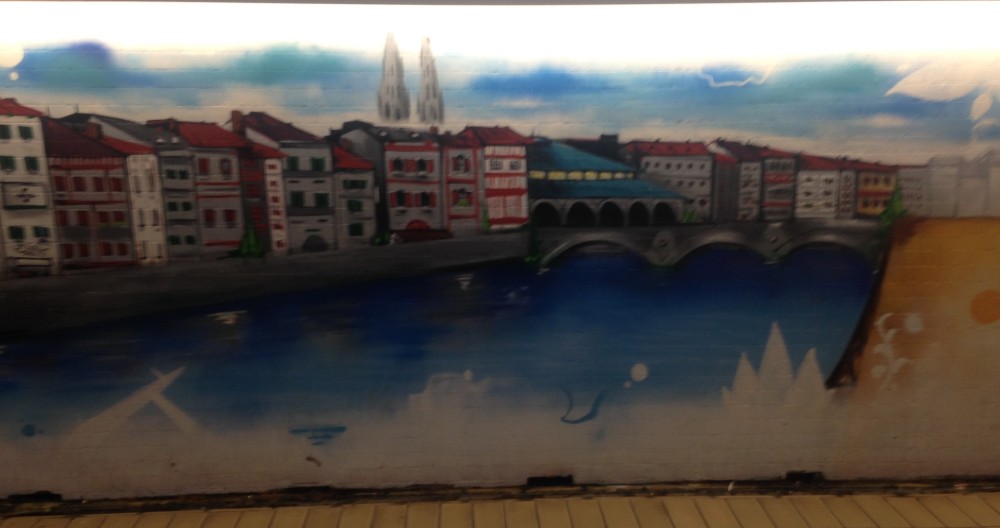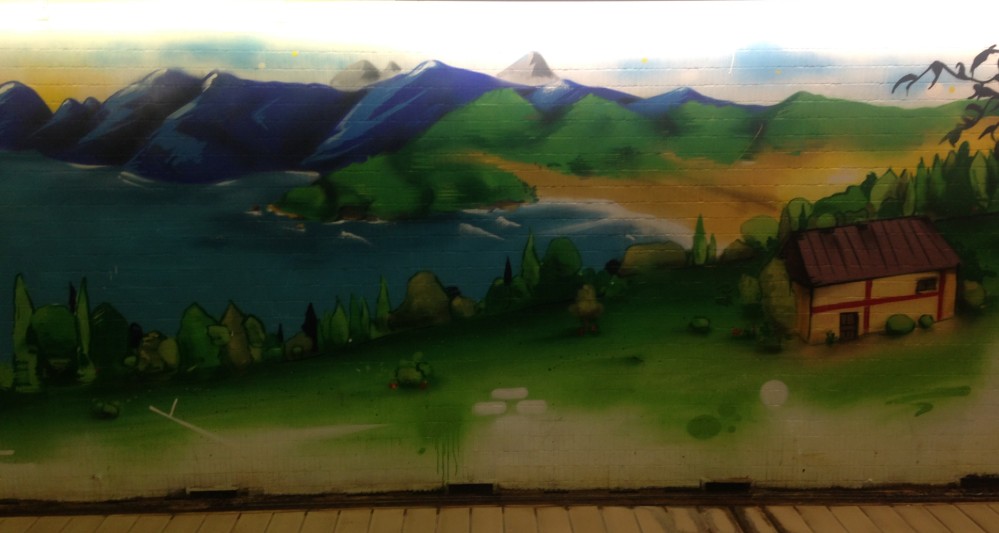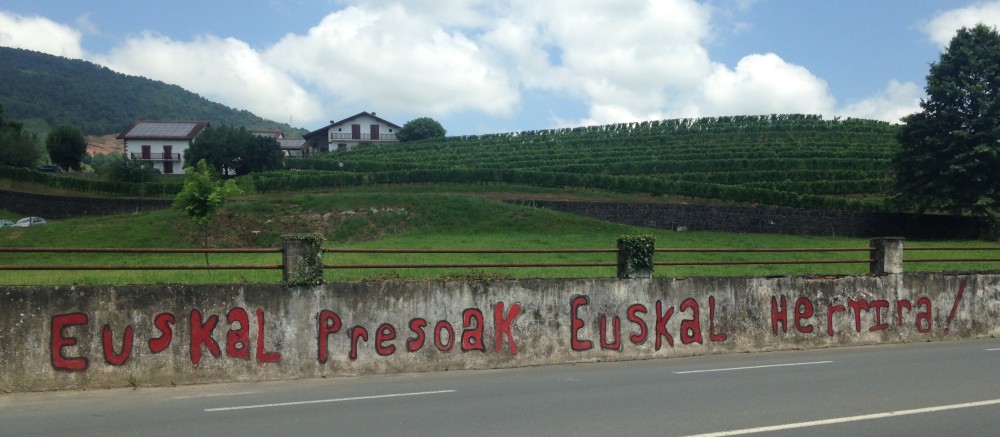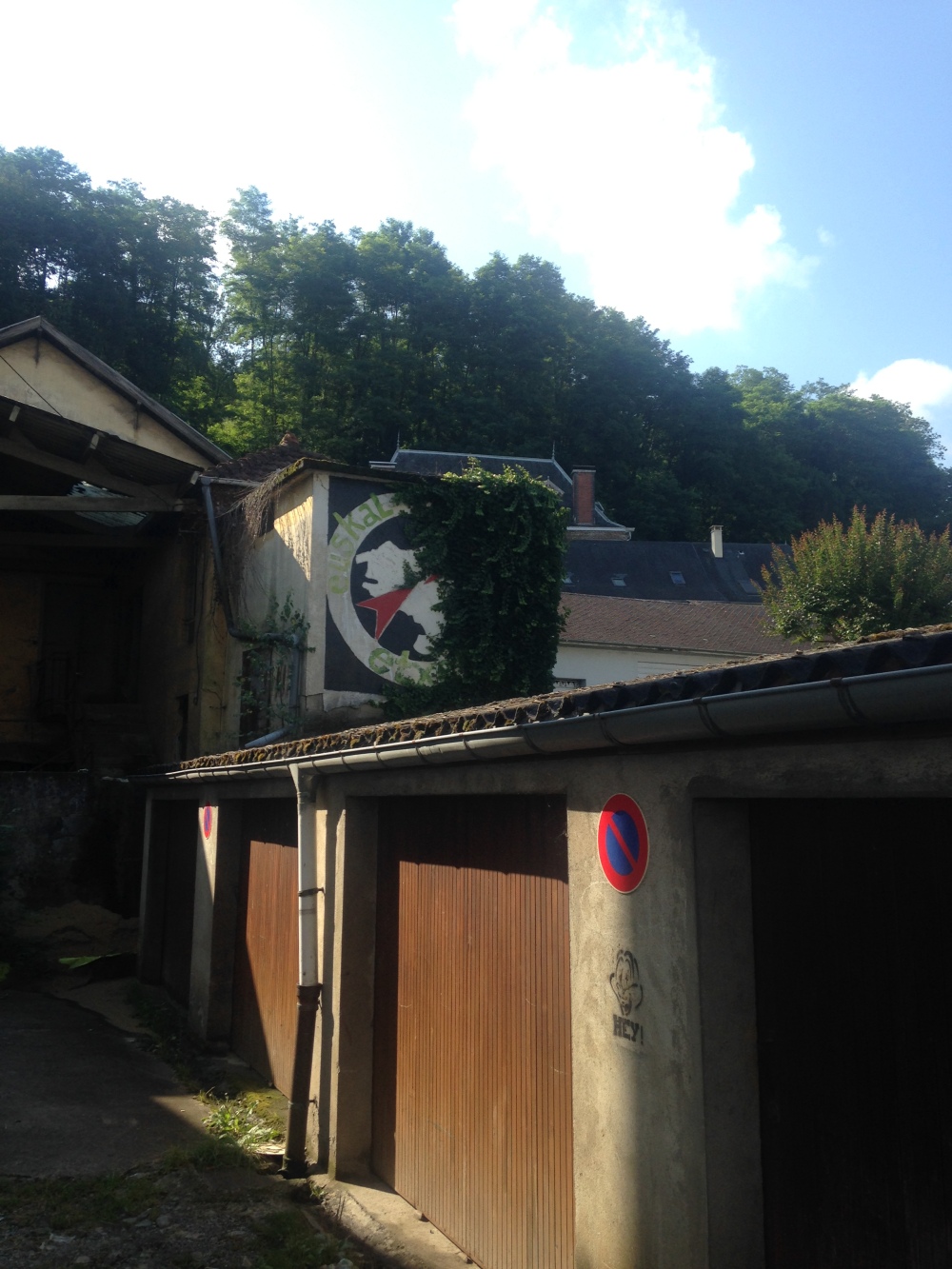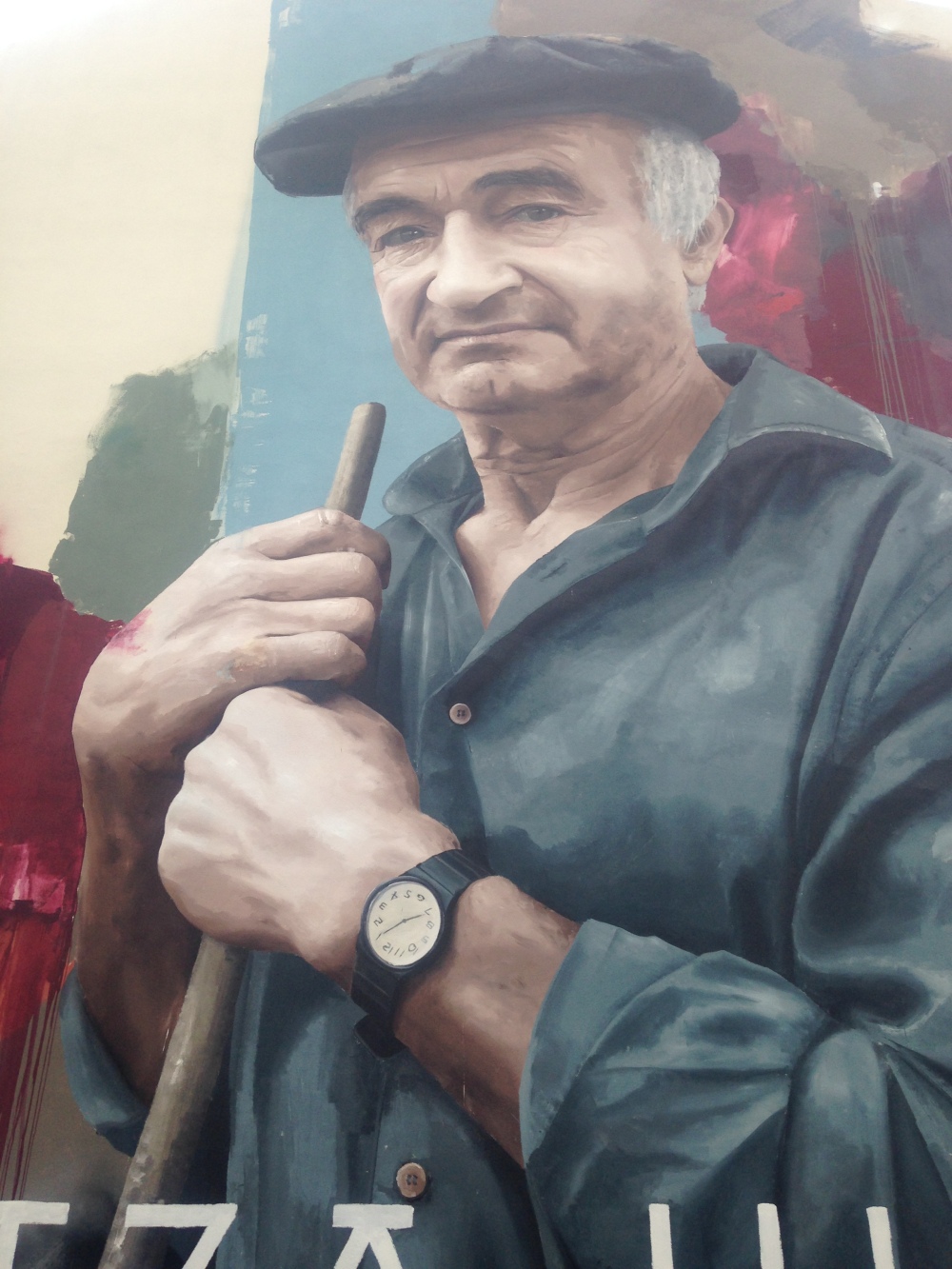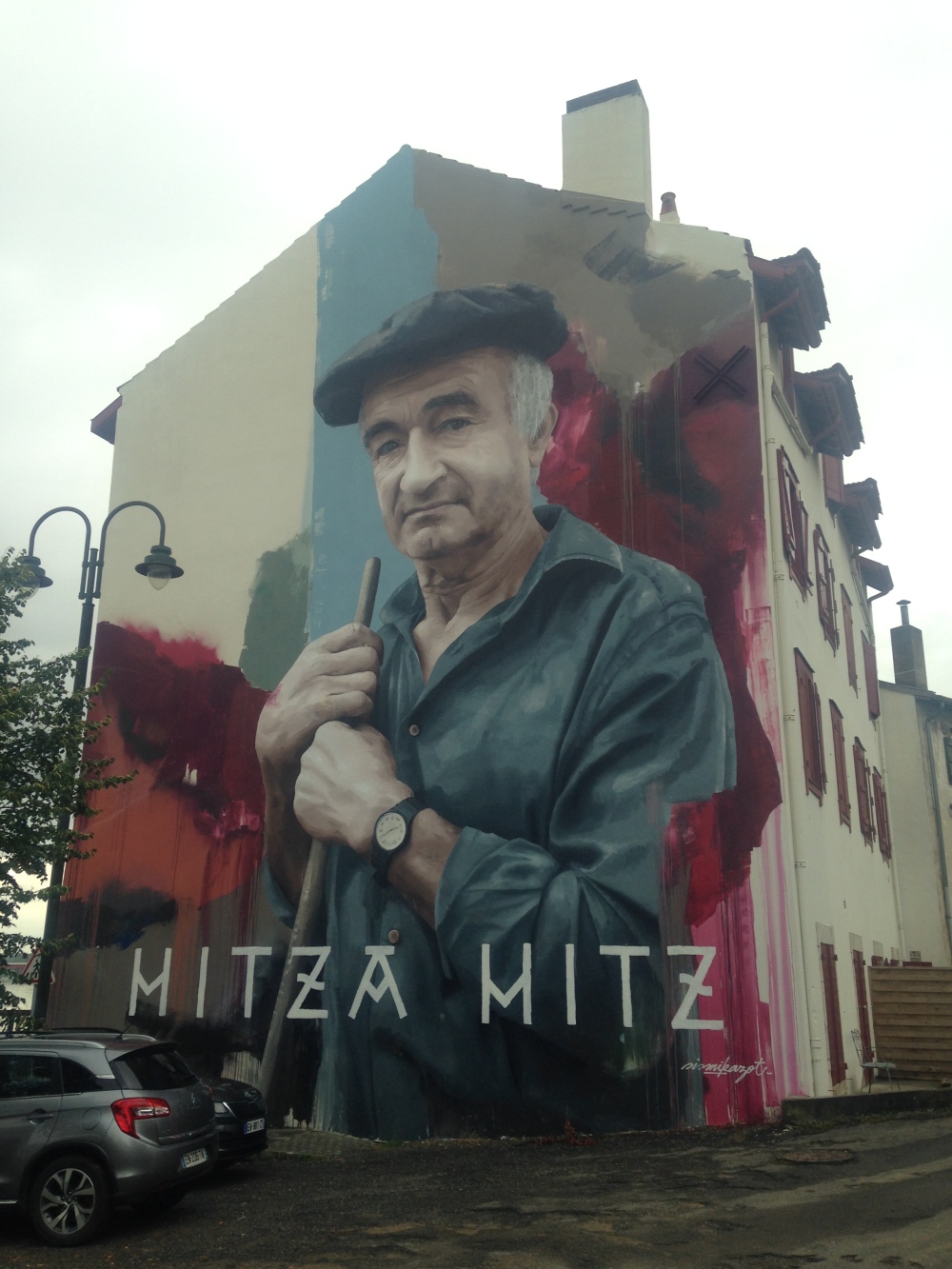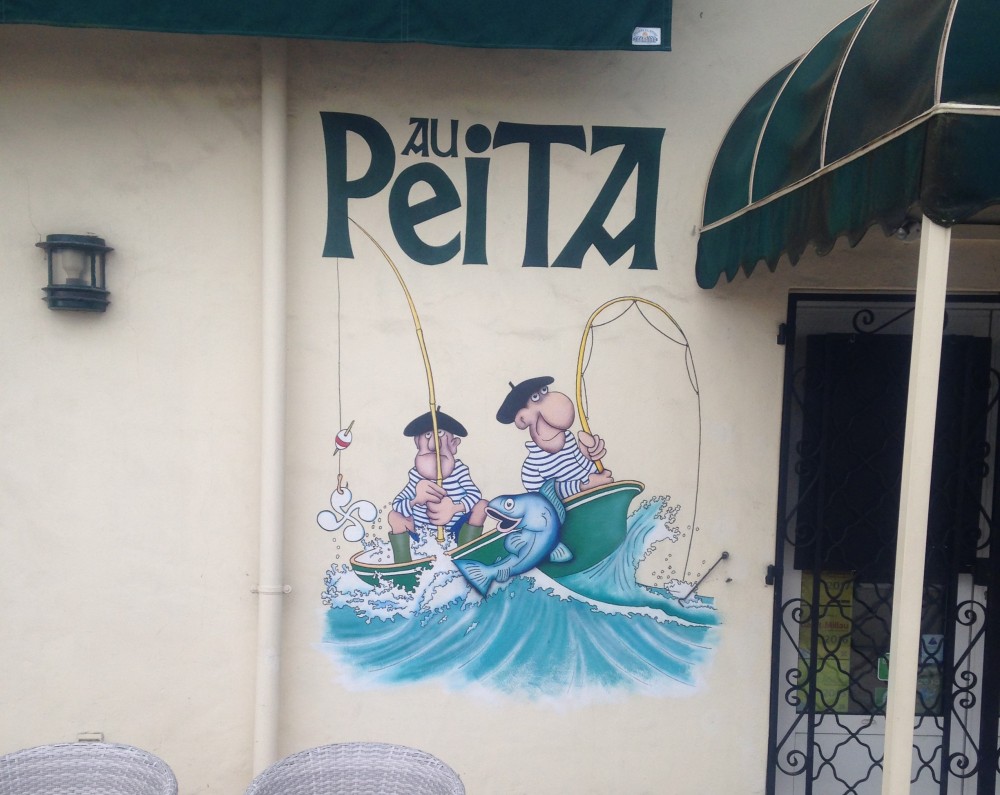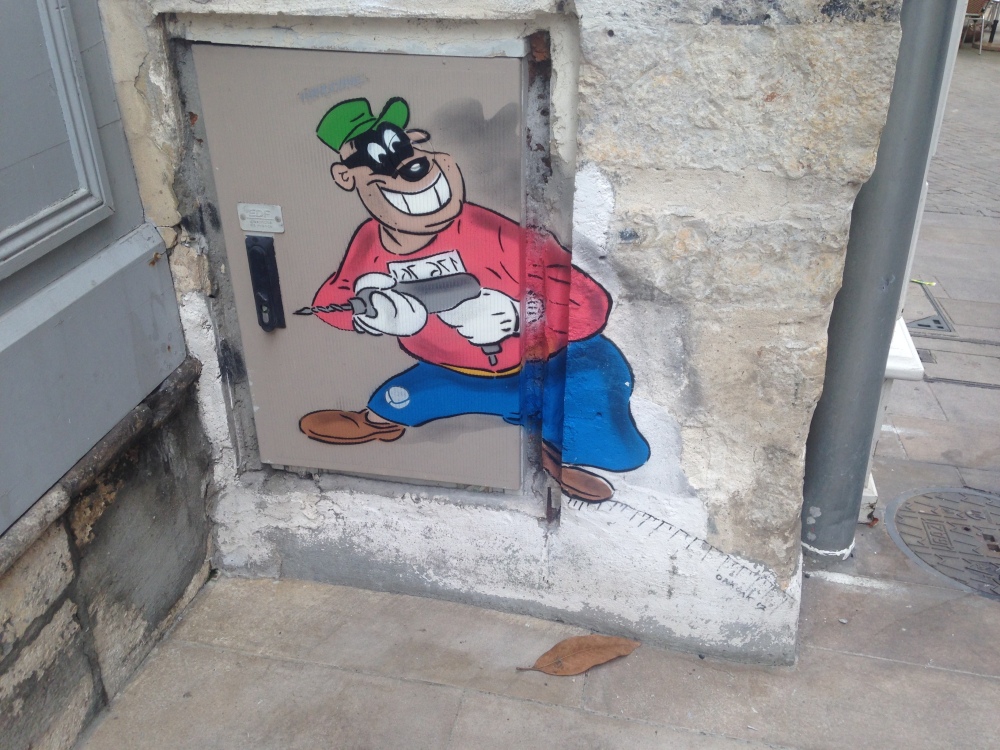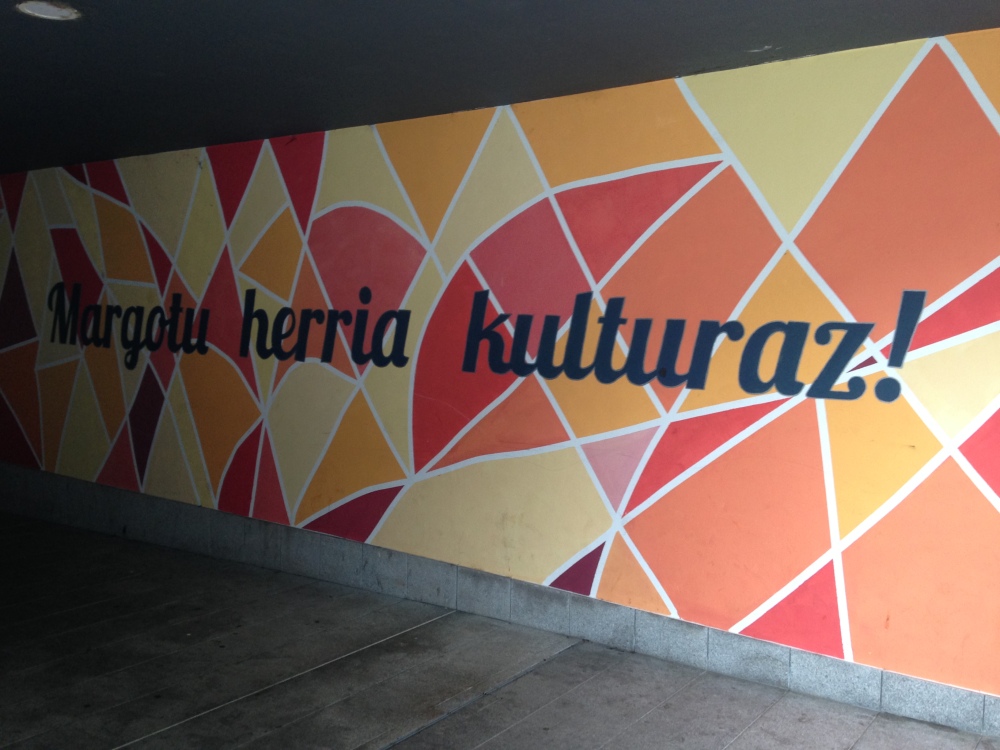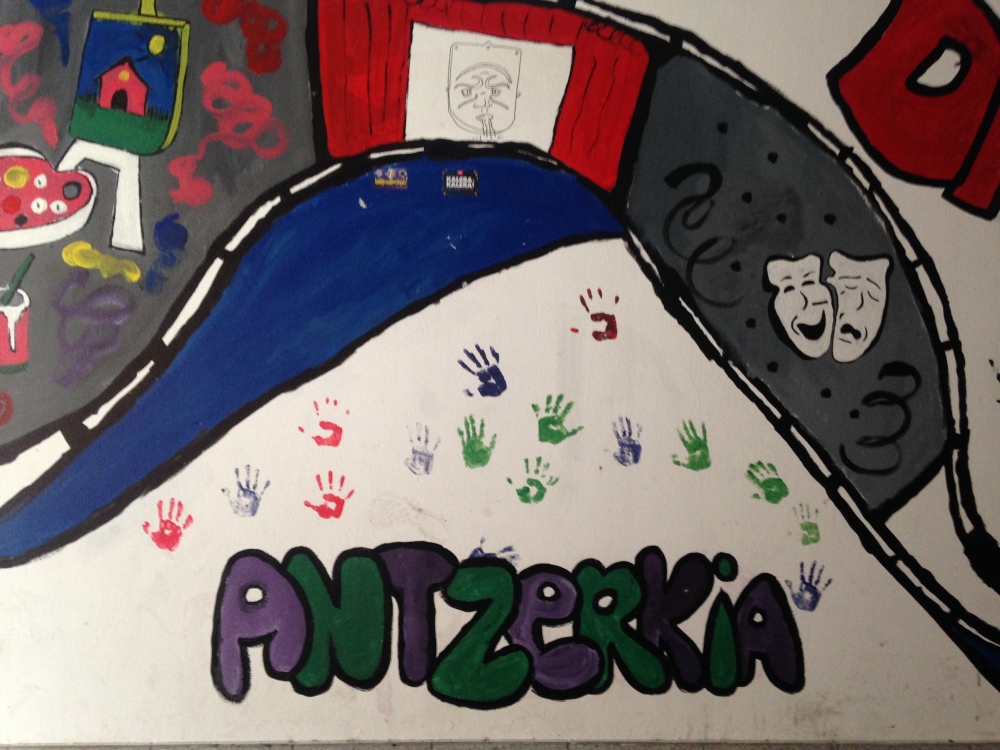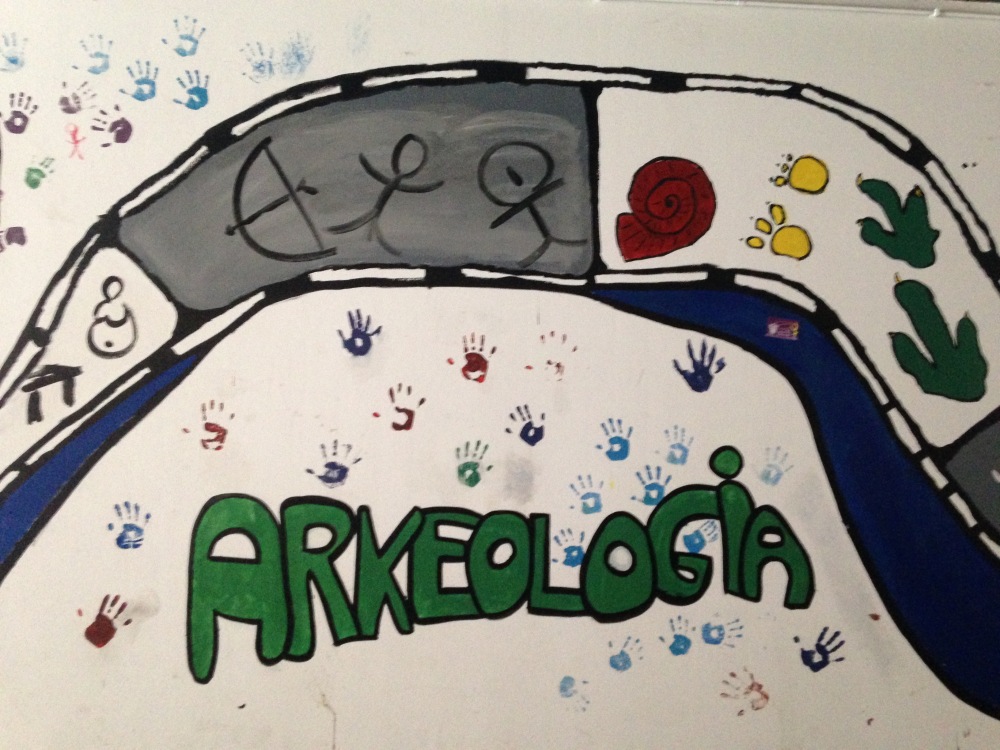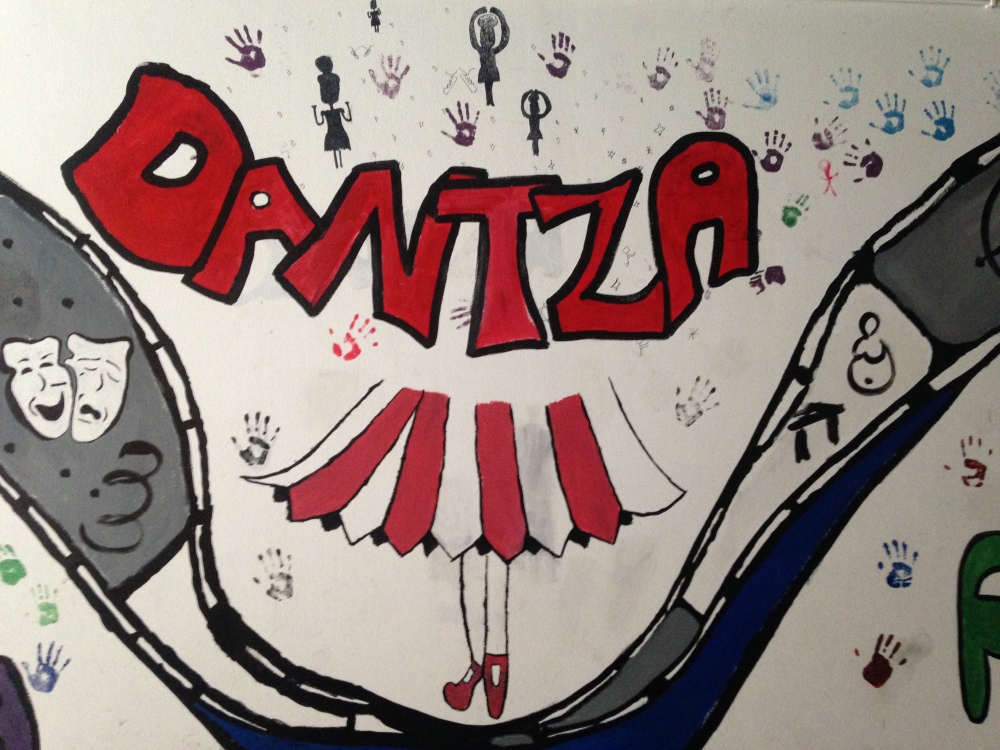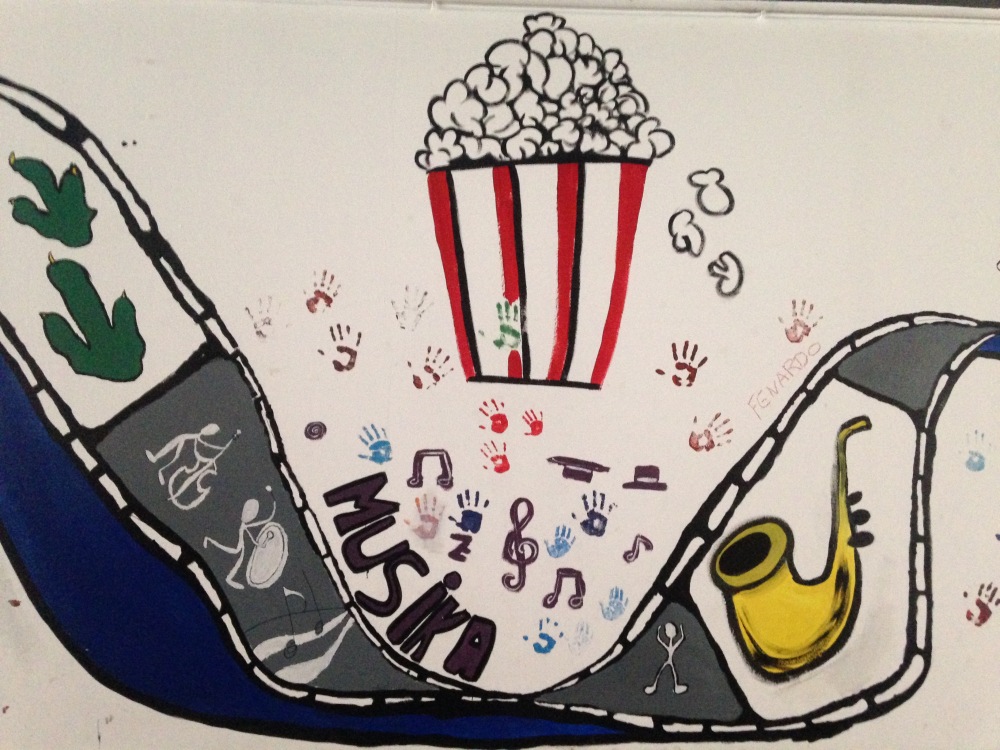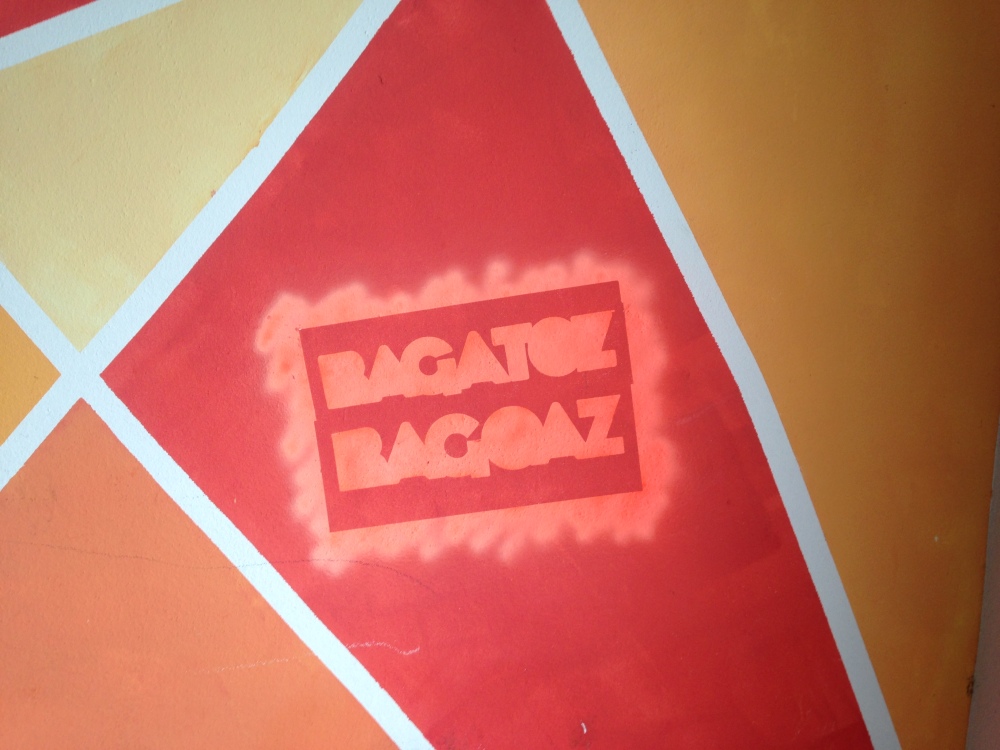Graffiti from the archives
Some old photos of writings or drawings on different walls, not really worth being called murals, but still. The first one is from Donostia/San Sebastián with the lines pintar algo por lo menos ‘at least paint something’ and euskarak egiten gaitu euskaldun ‘it’s the Basque language that makes us Basque’:
This one is from the church in Azpeitia: Se prohibe jugar a la pelota bajo la multa de 2 pesetas ‘pilota playing is forbidden under the penalty of 2 pesetas’:
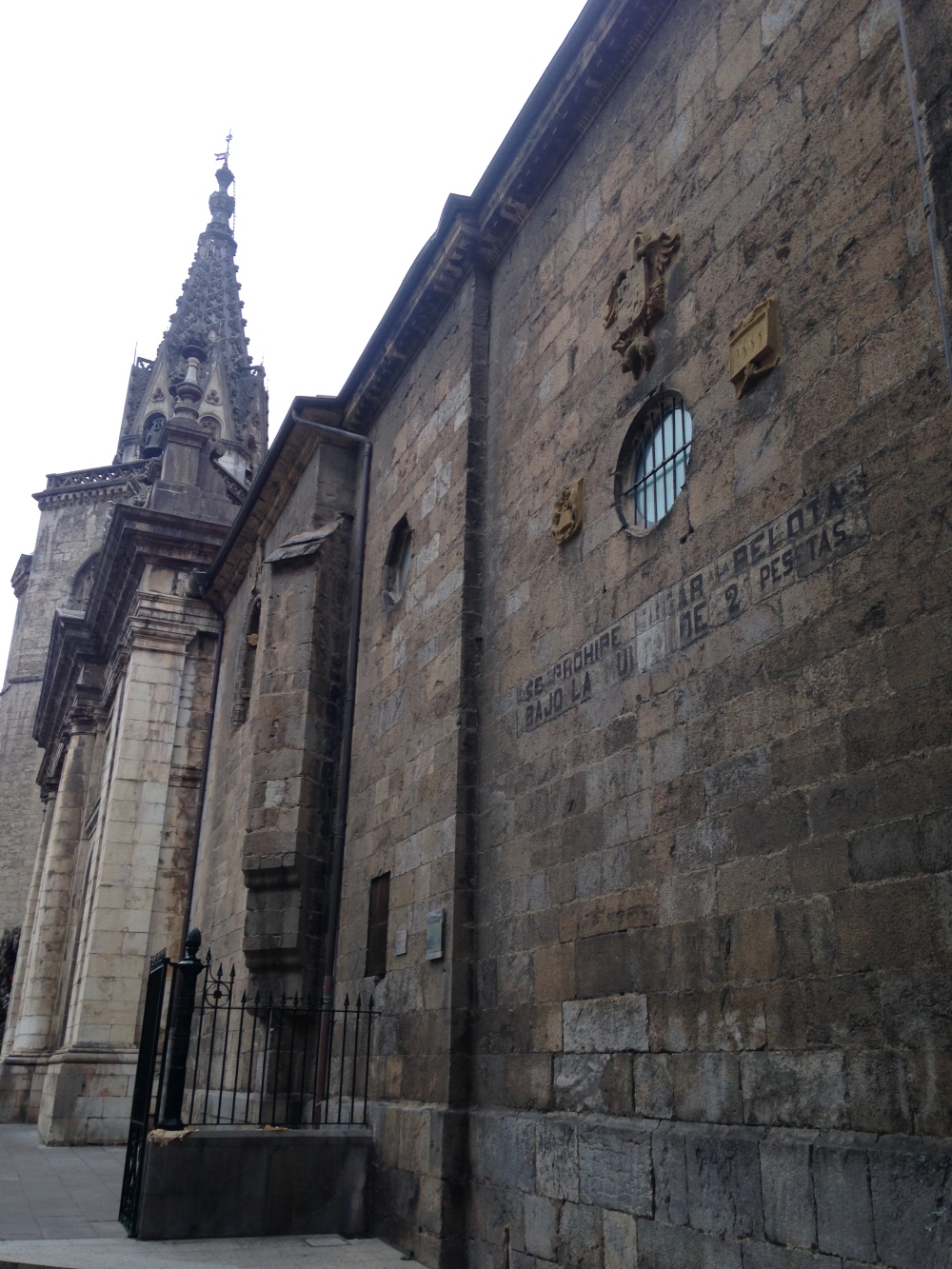 Somewhere in the forests between Orio and Zarautz, this stencil of Lenin had been sprayed on a small building:
Somewhere in the forests between Orio and Zarautz, this stencil of Lenin had been sprayed on a small building:
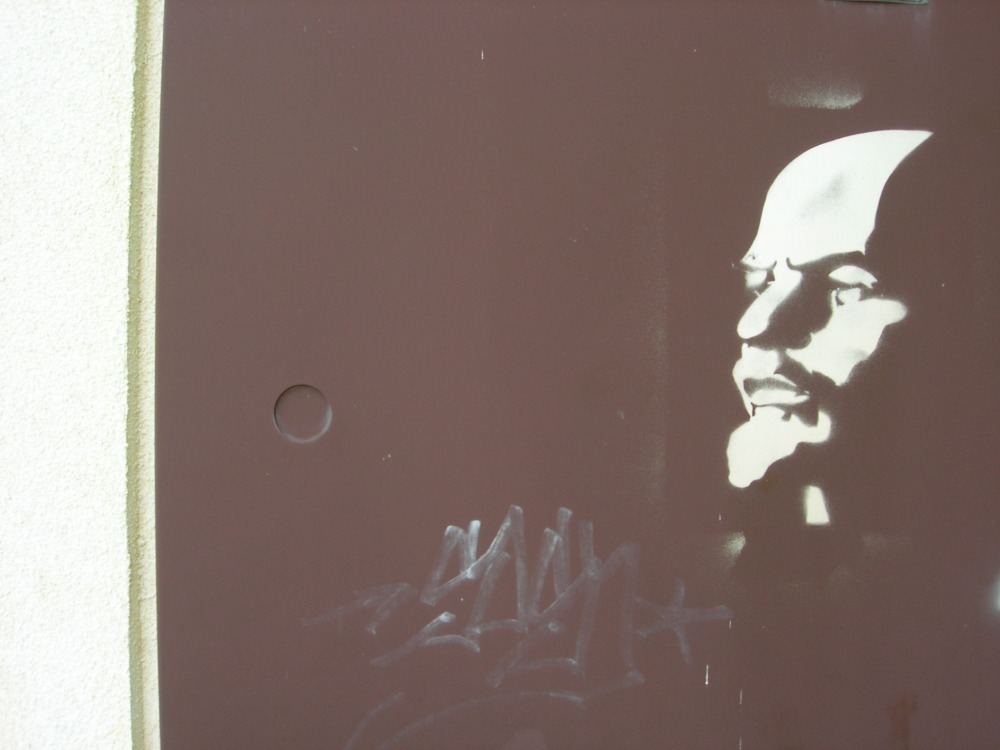
And in Zarautz, at a playground by Lapurdi Kalea close to the railway station, someone had written Jokin inor bezla maite izan zaitudala ‘Jokin, I’ve never loved anyone like you’_

Finally, two photos from the cathedral in Köln (Cologne). Not the Basque Contury, but still Basque graffiti, the first one saying EH [Euskal Herria] Basque Country, Baskenland, frei, free, libre, aske (‘free’ in German, Spanish and Basque) and depicting an ikurrina:
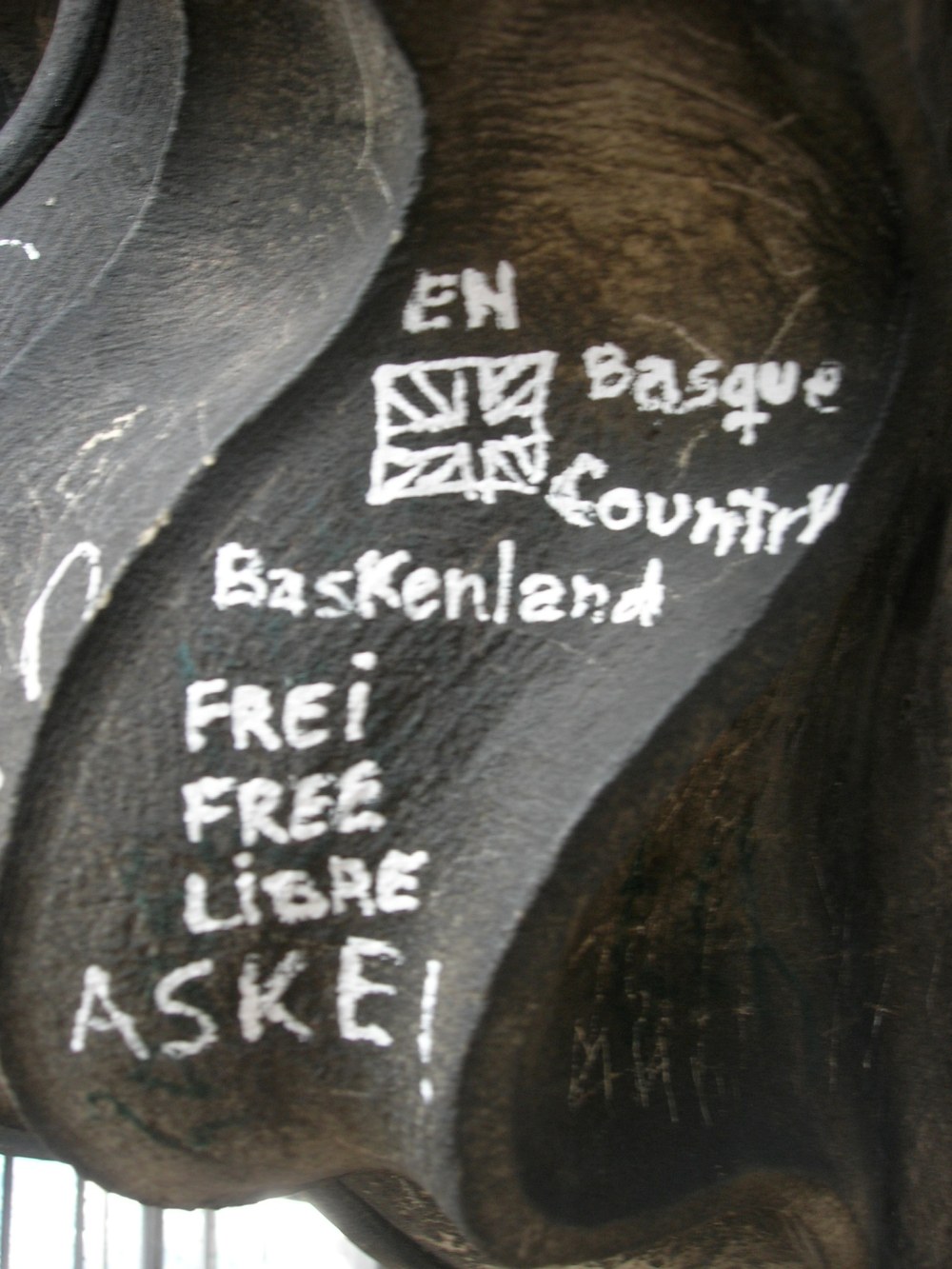
The other one says Gora Bermio eta Lekitxo! (Euskal Herria) ‘Go Bermeo and Lekeitio! (Basque Country)’, using the nicknames for the two towns by the coast of Bizkaia:
